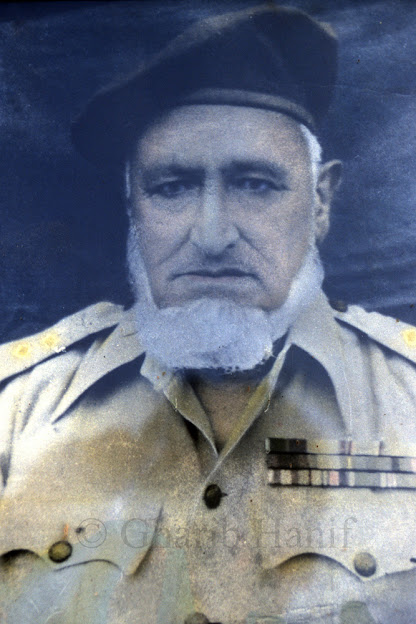Hast-o-Bood Part-26
Maharaja Ghulab Sing
The Sikh forces were reduced to 20,000 infantry and 12,000 cavalry. And a war ransom of Rs. 1.5 crore was imposed against them. Since the treasury was completely empty, paying the ransom was a great pain for the Sikh government. On this occasion, Sardar Gulab Singh Dogra's timely, cunning and predictable work came to fruition. During the reign of Maharaja Ranjit Singh, as a general, he saw the intoxication of rule and the lust for rule in order to please the British. With great flattery and cunning, he made a treaty with them at Amritsar on March 16, 1846, and in exchange for Rs. And so a so-called democracy and truth-loving British ruling nation who had overthrown the Muslim rule in India through fiber, conspiracies and divisions. The region of this dominant Muslim majority was sold to the Sikh Dogris without any practical domination through bargaining and, according to Hazrat Iqbal.
Farmers and cultivators sell their existence in the desert
The nation sells cheaply
The nation sells cheaply
Now Maharaja Gulab Singh was the owner of the state of Jammu and Kashmir without any other ownership and was the sovereign of the 95% Muslim population living in it. For Muslims, it was strictly forbidden to raise their voices against the slaughter of cows, free movement of duty, and the oppression of religious and government workers. Unemployment and non-payment of wages were among the rights of the ruling class. The chastity of the subjects was at the mercy of the ruling clique. Despite working all year round, Muslim farmers were unable to get enough food and shelter on their own. And everyone said in tongues,
Even if we sigh, we become infamous
Even if they kill, there is no discussion
Even if they kill, there is no discussion
During the reign of Maharaja Gulab Singh, the boundaries of the state were as follows. In addition to Mount Kaulin and Mount Karakoram in the north, Turkestan, Jhelum, Gujarat, Sialkot, Gordaspor districts of Punjab in the south, the states of Chamba, Tibet, Nepal and Hindu Kush and Afghanistan in the east, and the total area of the state is 81,000 square miles. Was This included 13,000 square miles of Ladakh and Gilgit. The entire state was divided into two provinces, Jammu and Kashmir. The province of Jammu included the districts of Jammu, Katua, Udhampur, Reasi and Mirpur, while the districts of Kashmir included Srinagar, Anantnag, Baramulla and Muzaffarabad.
Apart from the beautiful scenery of the state, captivating climate and other beauties, Emperor Jahangiri is rich in the fact that the people of Kashmir are simple, charismatic, present minded, healthy, handsome, beautiful, intelligent and intelligent. Many minds are able to carry weight on their backs and easily cross mountainous and dangerous roads in all seasons. They do not consider any kind of hard work as a disgrace. Women and men wear long clothes of remorse which are called putu in the national language. There is plenty of fruit here. Salt is scarce and is exported from India. Famine and floods are the destiny of Kashmir. In Hindu families, a special arrangement of lighting is made every year on the night of the 13th of Bhadas in the form of a festival. [1]. Because it is a common tradition that the river Bahat [Jhelum] was born that night. Apart from the spring of Kashmir, its autumn also has a unique charm. Emperor Akbar the Great [2] said the same thing when he saw apple, peach, grape and poplar trees in the orchards of Srinagar in the same season;
Taste of annihilation, new temptation, not in sight
Colorful anthem, spring, autumn
But this paradise land was looted during the Dogra period of tyranny and was subjected to forced labor and moral degradation. It paved the way for new charkas for every incoming ruler and thus the self-esteem of the wounded and helpless Kashmiris was awakened. During the reign of Maharaja Gulab Singh, non-Muslim subjects were discriminated against and considered first class citizens. While the Muslim subjects who were in the overwhelming majority. She was forced to work and serve under the burden of taxes. His status was less than that of a cattle. After the death of Maharaja Gulab Singh in 1857, his son Maharaja Ranbir Singh ascended the throne. His three sons were Pratab Singh, Ram Singh and Amr Singh. Maharaja Ranbir Singh died in the year 1885 AD. He too was no different from his father, Maharaja Gulab Singh. The subjects, especially the Muslims, were his mercenary slaves and had no significant authority in the civil administration of the state or in the army. Their general status was even lower than that of the Shudras. After Maharaja Ranbir Singh, his eldest son Maharaja Pratab Singh became the ruler. He was a tyrant, a fanatic, a tyrant and a blood-sucking king. He was a luxurious and lustful ruler. His subjects resented his handiwork. Thus, underground political activities began against the Dogra government at the same time. Maharaja Pratab Singh was childless. His other brother Ram Singh had also died childless. However, the third deceased brother Amar Singh had a son named Hari Singh. Who ascended the throne in 1925 AD on the death of his uncle.
At the same time, an inter-state National Conference was convened, which also included a significant number of Kashmiri Pandits from the Muslim nation, led by Pandit Prem Nath Bazaz. Who continued the struggle for protection of human rights and independence from personal dictatorship in Kashmir under the leadership of Sher Kashmir Sheikh Muhammad Abdullah
To be continue ….
[1] Royal Tour of Kashmir, by Muhammaduddin Fouq, page number eleven
[2] Royal Tour of Kashmir, by Muhammaduddin Fouq, page number twelve
[2] Royal Tour of Kashmir, by Muhammaduddin Fouq, page number twelve
Note: It is not necessary that the blogger is agreed with the text of the Book.



Comments
Post a Comment